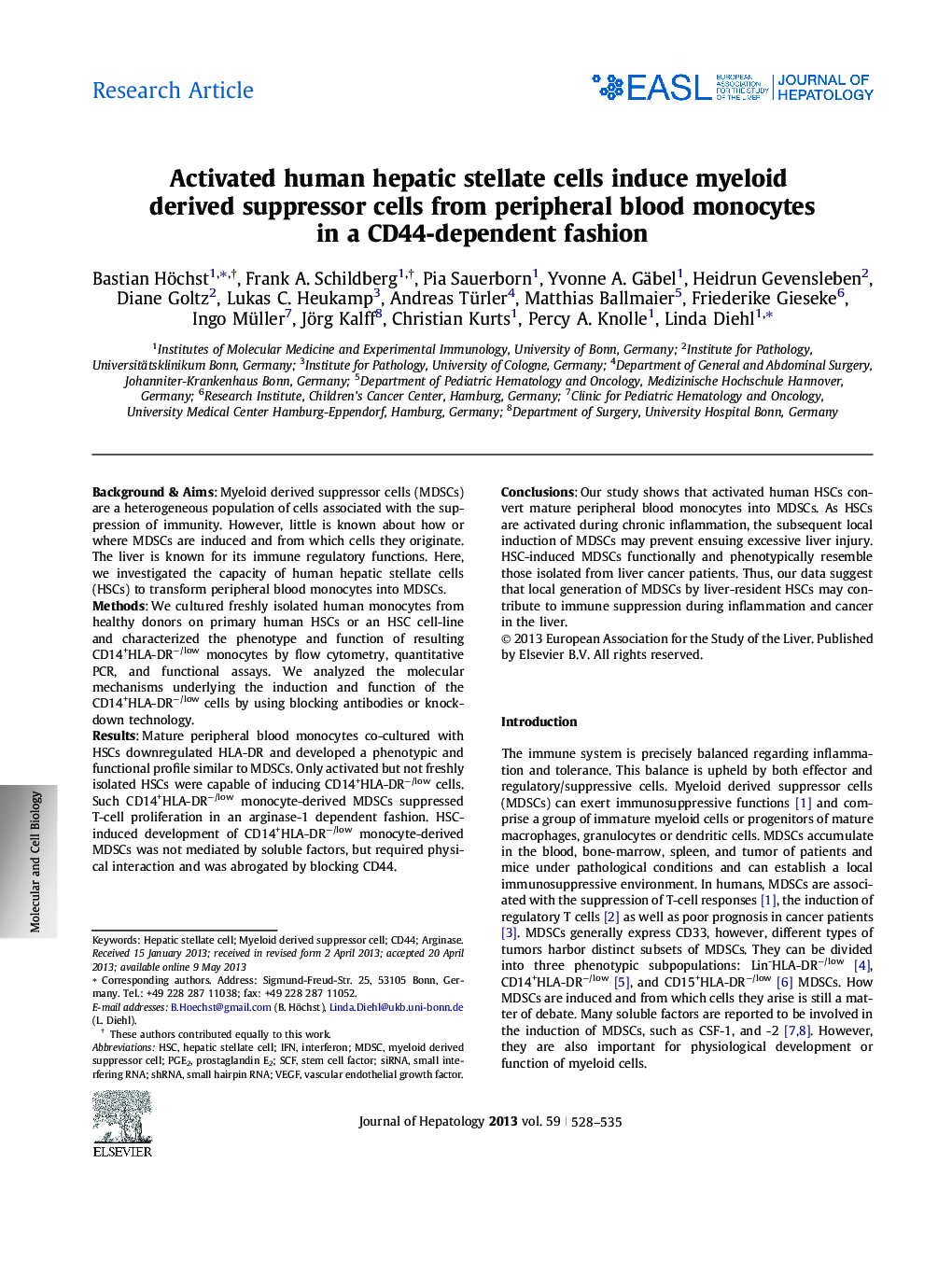| Article ID | Journal | Published Year | Pages | File Type |
|---|---|---|---|---|
| 6104116 | Journal of Hepatology | 2013 | 8 Pages |
Background & AimsMyeloid derived suppressor cells (MDSCs) are a heterogeneous population of cells associated with the suppression of immunity. However, little is known about how or where MDSCs are induced and from which cells they originate. The liver is known for its immune regulatory functions. Here, we investigated the capacity of human hepatic stellate cells (HSCs) to transform peripheral blood monocytes into MDSCs.MethodsWe cultured freshly isolated human monocytes from healthy donors on primary human HSCs or an HSC cell-line and characterized the phenotype and function of resulting CD14+HLA-DRâ/low monocytes by flow cytometry, quantitative PCR, and functional assays. We analyzed the molecular mechanisms underlying the induction and function of the CD14+HLA-DRâ/low cells by using blocking antibodies or knock-down technology.ResultsMature peripheral blood monocytes co-cultured with HSCs downregulated HLA-DR and developed a phenotypic and functional profile similar to MDSCs. Only activated but not freshly isolated HSCs were capable of inducing CD14+HLA-DRâ/low cells. Such CD14+HLA-DRâ/low monocyte-derived MDSCs suppressed T-cell proliferation in an arginase-1 dependent fashion. HSC-induced development of CD14+HLA-DRâ/low monocyte-derived MDSCs was not mediated by soluble factors, but required physical interaction and was abrogated by blocking CD44.ConclusionsOur study shows that activated human HSCs convert mature peripheral blood monocytes into MDSCs. As HSCs are activated during chronic inflammation, the subsequent local induction of MDSCs may prevent ensuing excessive liver injury. HSC-induced MDSCs functionally and phenotypically resemble those isolated from liver cancer patients. Thus, our data suggest that local generation of MDSCs by liver-resident HSCs may contribute to immune suppression during inflammation and cancer in the liver.
Graphical abstractActivated hepatic stellate cells induce myeloid-derived suppressor cells CD44-dependently. In the liver, stellate cells (HSC) are located in the space of Dissé and are separated from passenger leukocytes by liver sinusoidal endothelial cells (LSEC). Upon inflammatory stimuli, HSC become activated and profibrotic and upregulate CD44. Physical contact between CD44high HSC and CD14+ monocytes, derived from peripheral blood, leads to the trans-differentiation of these monocytes into CD14+HLA-DRâ/low myeloid-derived suppressor cells (MDCS) that can suppress adaptive T-cell responses in an arginase-(Arg-1)-dependent fashion. Together, this indicates that hepatic stellate cells can develop an immune regulatory function in the inflamed liver, leading to the local induction of MDSC, capable of suppressing adaptive immunity.Download high-res image (130KB)Download full-size image
